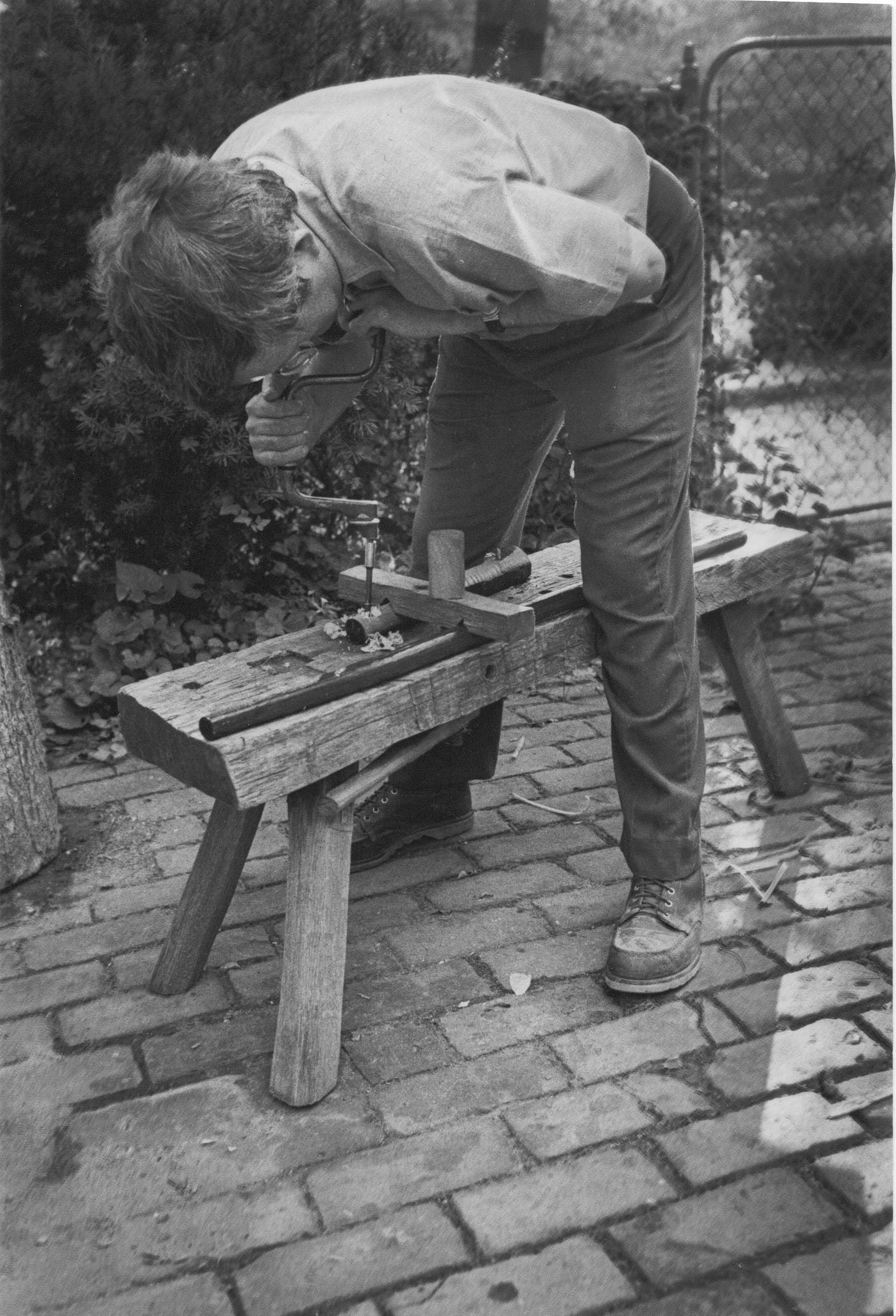You can teach an old dog new tricks, but it might not go as planned. So I set out to make a copy of a ladderback by Dave Sawyer, based in part on one I borrowed last month.
https://peterfollansbeejoinerswork.substack.com/p/looking-at-a-dave-sawyer-ladderback
I consider this chair part of my Craft Genealogy project. Dave is well known, rightfully so, for his outstanding Windsor chairs - both making them and teaching it to others. But for many years before that he made ladderback chairs. Hundreds of them. Most of what I know about them comes from just a few sources - one is the Rick Mastelli article written in Fine Woodworking in 1982 - about a workshop Dave taught at Drew & Louise Langsner’s Country Workshops. That article has some critical dimensions of the chair, but you still have to know something about how to make a ladderback to take those notes and numbers to come up with a chair.
In my research about Daniel O’Hagan I got a series of notes he made when Dave made one of his chairs in Daniel’s shop in 1974. And then there’s the notes and letters in the Jennie Alexander collection at Winterthur Museum & Gardens’ research library. JA and Sawyer began corresponding in 1976 and met the following year. Some of what I know about Dave’s chairmaking process comes from those letters. And as I mentioned, there’s the Sawyer chair I have on hand.
If you know enough about making chair parts from a log, using Mastelli’s article you can prep the parts, bend the rear posts and slats - and cut the parts to length. He gives you the seat plan’s angle (1:9 slope) and a chair stick - so most of the information is there.
How to bore it - well, it depends. I have made lots of post & rung chairs over the years by boring the posts at a low bench between my knees - it’s how I first bored JA chairs. This shot of JA in the early years boring a chair post shows what it’s about -
Keep reading with a 7-day free trial
Subscribe to Follansbee's Substack to keep reading this post and get 7 days of free access to the full post archives.


